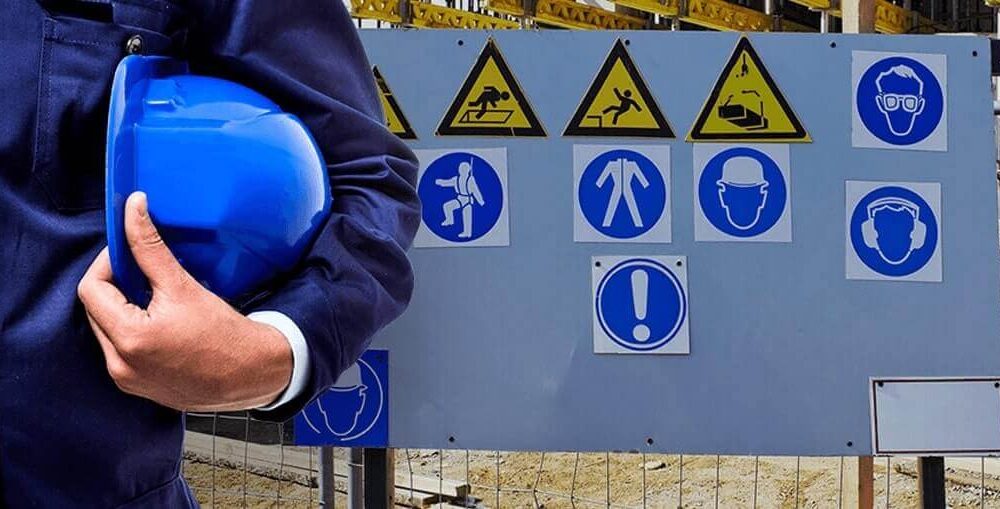Workplace safety serves as the cornerstone of a healthy and productive work environment. In addition to preventing mishaps and injuries, ensuring worker safety promotes a sense of confidence and satisfaction among employees. Prioritising safety helps businesses minimise absenteeism, increase employee happiness and decrease turnover. Keeping a safe workplace has advantages for both employees and organisations since it affects both employee morale and the performance of an organisation.
What is an Effective Safety Policy?
Good workplace safety standards are crucial in every organisation, regardless of whether you work in the public or private sector. A safety policy is a written document that serves as an organisation’s general guidelines for all safety-related values, procedures and guidelines.
No one safety strategy works for all organisations since each one has unique features, environment and legal frameworks. Therefore, you must follow a disciplined process to develop a safety policy and implement it across all levels of the organisation.
Employer’s Responsibilities in Promoting Safety Measures
Distribute Resources
Employers must ensure that safety hazards are controlled and that workers have access to the proper safety equipment, including Personal Protective Equipment (PPE) and adequate safety supervision, depending on the industry, type of work and business requirements.
They must also provide employee safety training to offer necessary resources and assistance to employees.
Demonstrate Accountability
Representatives, officials and managers who are responsible for implementing safety measures must be adequately trained and certified to guarantee that employee safety is in the right hands.
Implementing Procedures
Clear rules are the best way to implement safety practices. Employers must implement effective safety protocols, with active involvement from employees and support from management.
Employers also need to approach worker safety as an ongoing process. Therefore, it would be appropriate to plan and carry out frequent audits and inspections of employee safety programmes.
Provide Education and Awareness
Employee training is the foundation for promoting a culture of safety and well-being. Health and safety courses covering specific hazards and safety procedures provide staff members with the skills to safeguard themselves and their coworkers. Frequent training sessions keep staff members informed about new methods and equipment while ensuring that safety is always given priority.
However, encouraging a safety culture extends beyond providing training. It entails establishing an environment where every facet of work is done with safety in mind. Programmes such as safety committees, open communication lines and recognition schemes for safe behaviour promote proactive approaches to safety.
Workplace Safety Best Practices
Identify the Dangers to Workplace Safety
Identifying risks and safety concerns is the first step in establishing a safe workplace. Once you’ve recognised them, you can then take action against them. Some hazards include ergonomic concerns, hazardous substances, malfunctioning equipment, electrical issues, trip and fall dangers and environmental problems.
Whenever there is an accident or near miss, thorough investigations and frequent safety audits should be conducted to identify hazards and implement control measures. It is also crucial to encourage staff members to disclose any safety problems. Employees should be reassured that their concerns will be taken seriously and that there is no need to fear reprisal for reporting these issues. Even better, set up a way for anonymous reporting.
Transparent and Effective Safety Communication
Your workplace safety policy will only be successful if it is effectively communicated to every organisation member. This communication should ideally begin as early as the interview process to ensure that your staff share your values.
Open communication is crucial during a crisis. This entails giving stakeholders and staff timely information, reassuring them and outlining the actions to take to handle the problem. Good communication reduces anxiety and maintains trust.
Employee Safety Training
Workers must be aware of the risks and adopt the necessary safety measures. If they handle dangerous substances or operate large equipment, they must possess the know-how and skills to do their jobs properly.
Safety training encompassing crucial subjects such as hazard awareness and response, basic first aid, fire safety and manual handling training in offices can be used to impart these skills and knowledge.
Prioritise Emotional and Physical Health
Stress at work may lead to a variety of health problems, including depression and anxiety. It may also result in a loss of concentration, raising the possibility of mishaps. Therefore, it’s critical to remember that employee well-being extends beyond their physical security and well-being.
To counteract workplace stress, implement wellness programmes and counselling services and encourage employees to take frequent breaks to avoid fatigue and burnout.
Post-Crisis Analysis
It is important to conduct a comprehensive review or analysis following a crisis to determine the success of the response. Analysing what went well and what may be improved as part of this evaluation process can help the organisation better handle future crises.
Conclusion
The successful implementation of workplace safety regulations necessitates a thorough and multifaceted strategy that considers employees’ physical and emotional health. The ultimate purpose of workplace safety procedures is to foster an atmosphere where workers feel respected, safe and empowered. Organisations can improve employee well-being, productivity and job satisfaction by prioritising safety. This will help them achieve long-term success and remain resilient in a constantly changing work environment.
